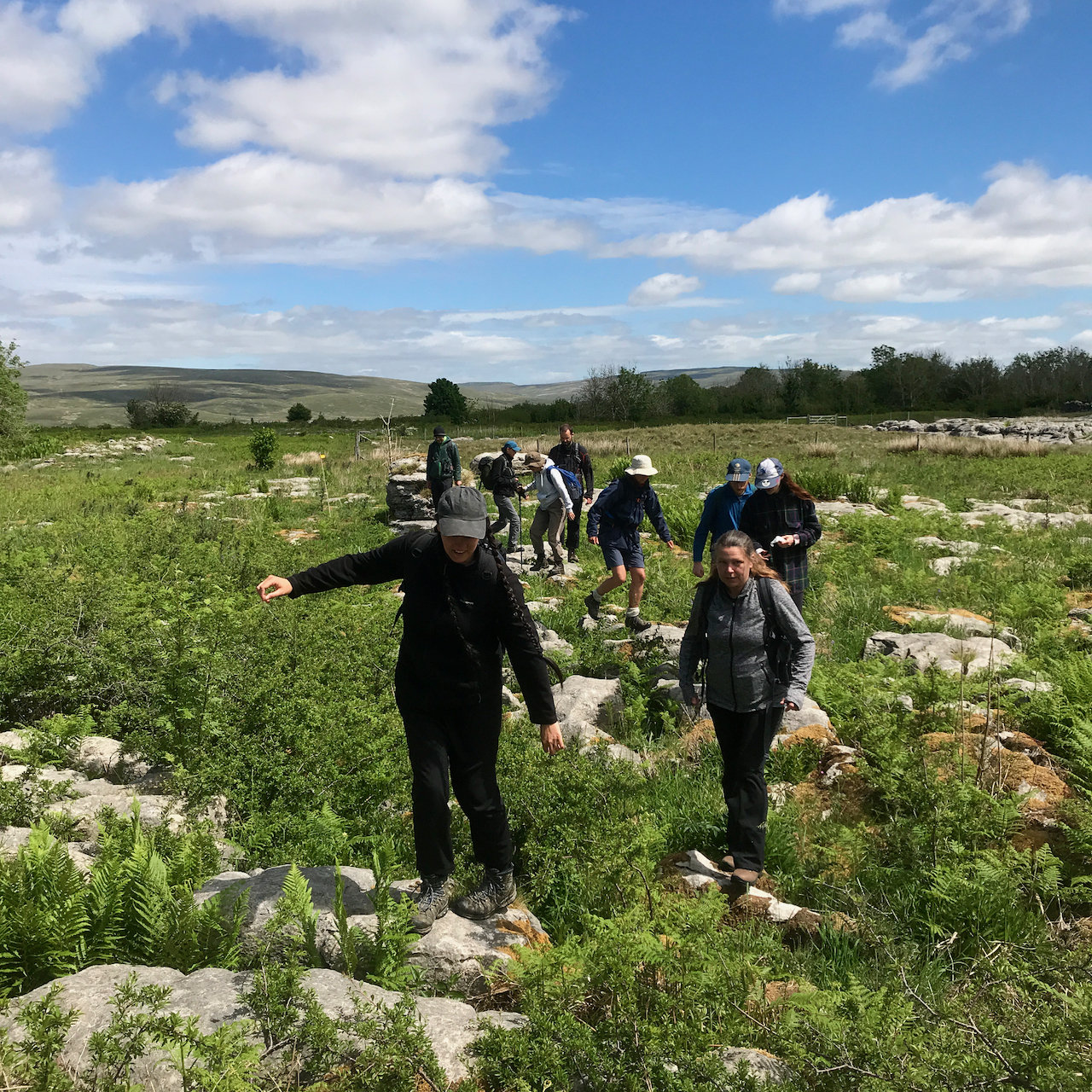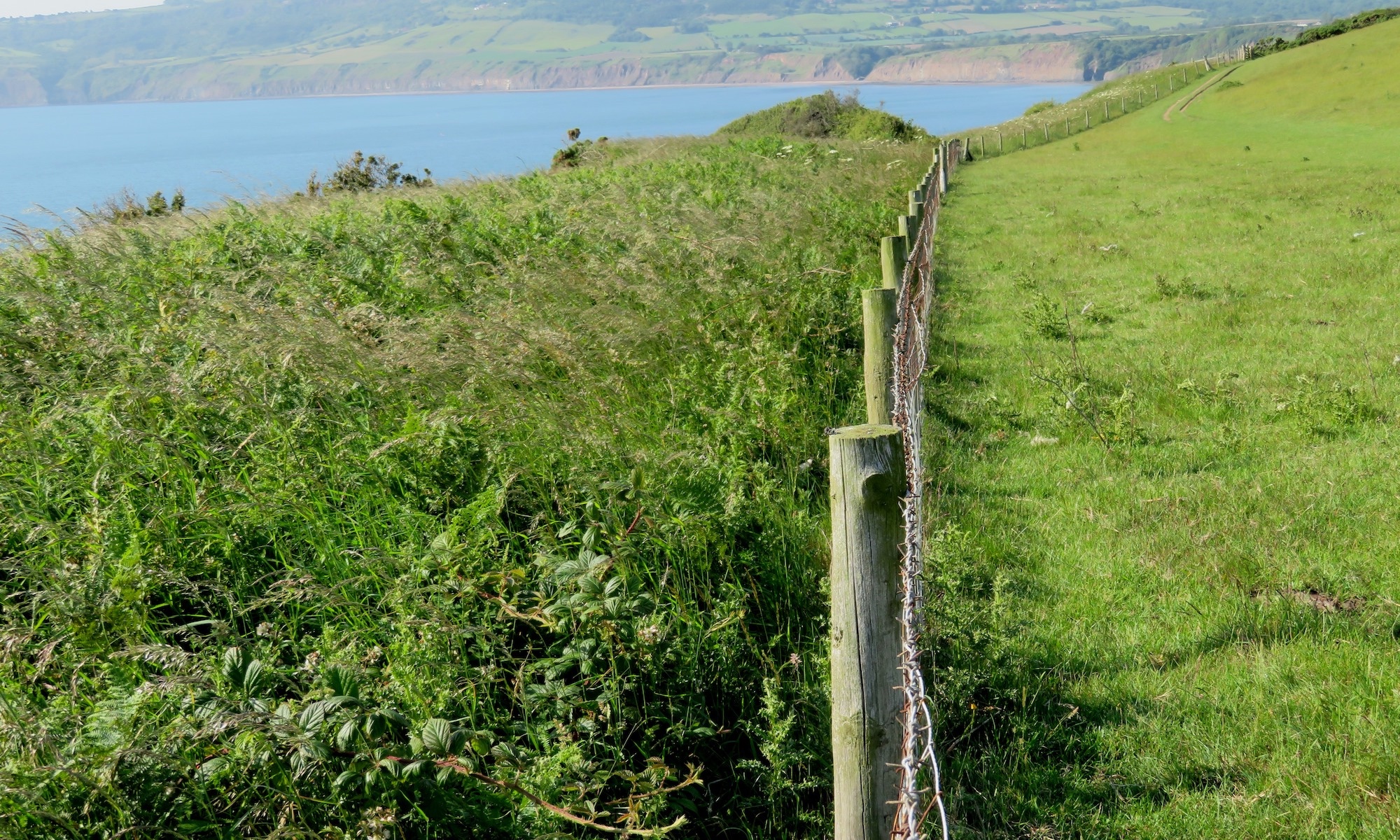by Kate Graham and Antonia Beardsall
29th July, 2021
The mountain of Ingleborough stands in the western part of the Yorkshire Dales, between Pen-y-ghent and Whernside. It is surrounded by limestone pavements; a dramatic, invigorating and apparently wild landscape. However, at the moment, it isn’t really that wild. The land shows the influence of people over many centuries, and in particular the high intensity farming of the most recent decades, which as the Yorkshire Wildlife Trust says has “ stripped the land to its bare bones”.
It could be lush, green, and home to a wide diversity of plants, birds and animals, and an incredible new project brings together a range of partners to do just this. The project is a collaboration between Natural England’s Ingleborough National Nature Reserve team (NNR) , the Yorkshire Wildlife Trust, The University of Leeds, The United Bank of Carbon, The Woodland Trust and WWF-UK. In coming together for the first time to establish a shared vision for Ingleborough, the partnership aims to embark on landscape-scale restoration of wildlife, from the river on the valley floor to the mountain’s summit. This more joined-up approach to restoration within this iconic landscape will connect existing reserves and aid nature’s recovery, providing support to low intensity farming and ensuring greater wildlife is more resilient in the face of the climate emergency and other pressures.
The project builds on the existing work of the NNR, which covers a large part of the north and western slopes of Ingleborough. This team have shown what is possible with reduced grazing pressure: in the Quarry reserve at Ribblehead, trees and shrubs have taken hold (despite the efforts of a train spotter with a chain saw) and an increasing range of wildflowers have established, and animals are returning. Walking through this area, the air was full of the sound of curlews, and flocks of starlings fluttering, landing, and circling again. As you walk towards Ingleborough, the footpath winds through the remains of a Viking settlement, the outlines of which are clearly visible. The National Reserve includes the Scar Close Reserve, an area of limestone pavement that has been protected from grazing for the last 25 years and is home to an incredible diversity of plants.
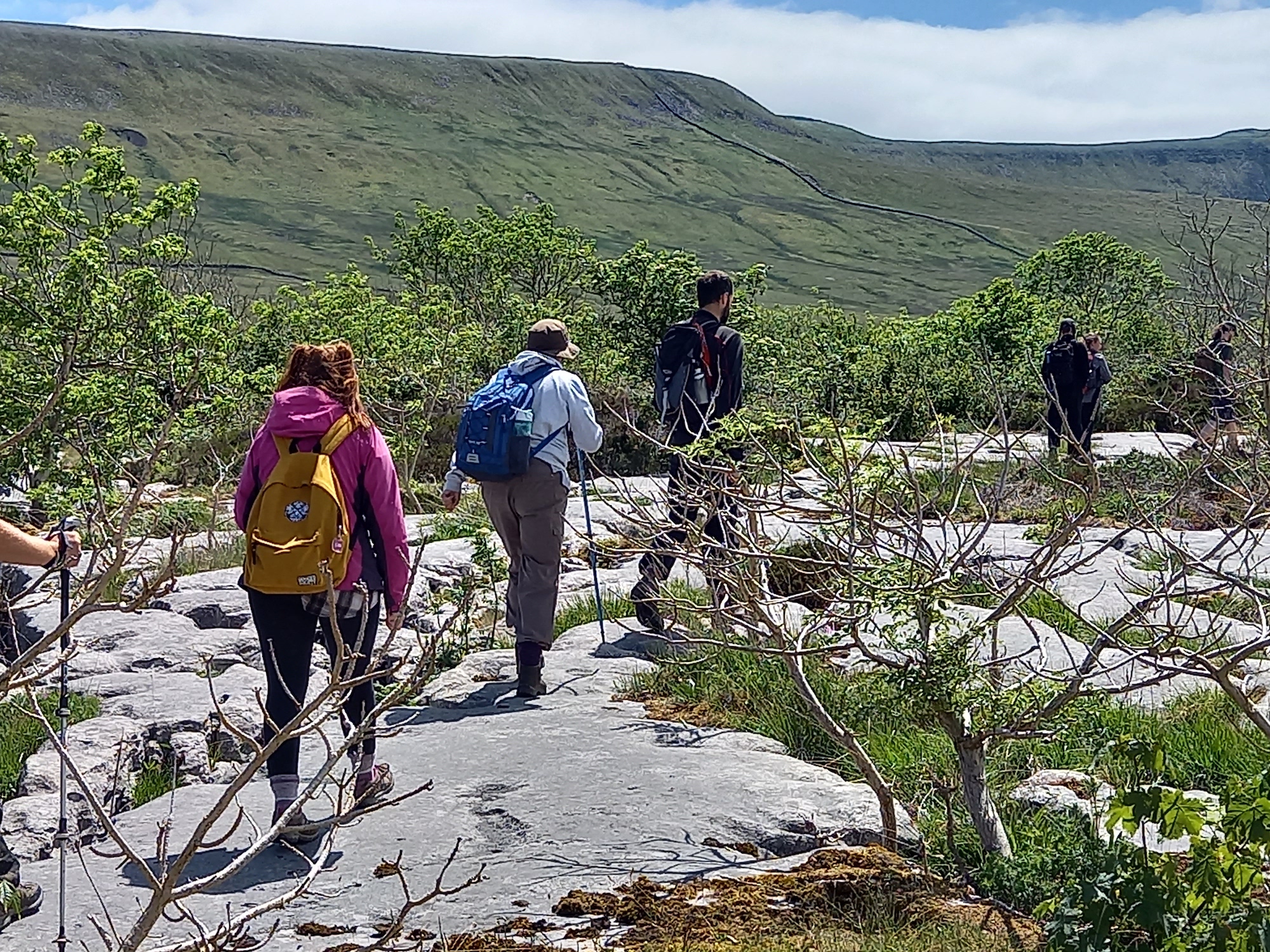
Relationships with local farmers are key, and all partners will be devoting time to nurturing relationships and bringing the local community on board with what might feel at times to be an approach that is challenging their livelihoods. The project will make a direct contribution to the climate emergency, through restoring peatland and expanding native woodland, connecting up existing woods and ultimately restoring the natural treeline on the slopes of Ingleborough.
The new woodland will be created partially by planting trees where the natural seed bank has depleted and regeneration isn’t happening naturally: 30,000 in the first five years, and partially by natural regeneration of scrubs and trees. The natural regeneration will be supported by reducing (or removing) grazing intensity and replacing sheep with a small herd of native cows in some areas. The idea is that the native cattle will reproduce some of the key ecosystem processes to promote biodiversity. Eventually there should be about 40 hectares of new woodland.
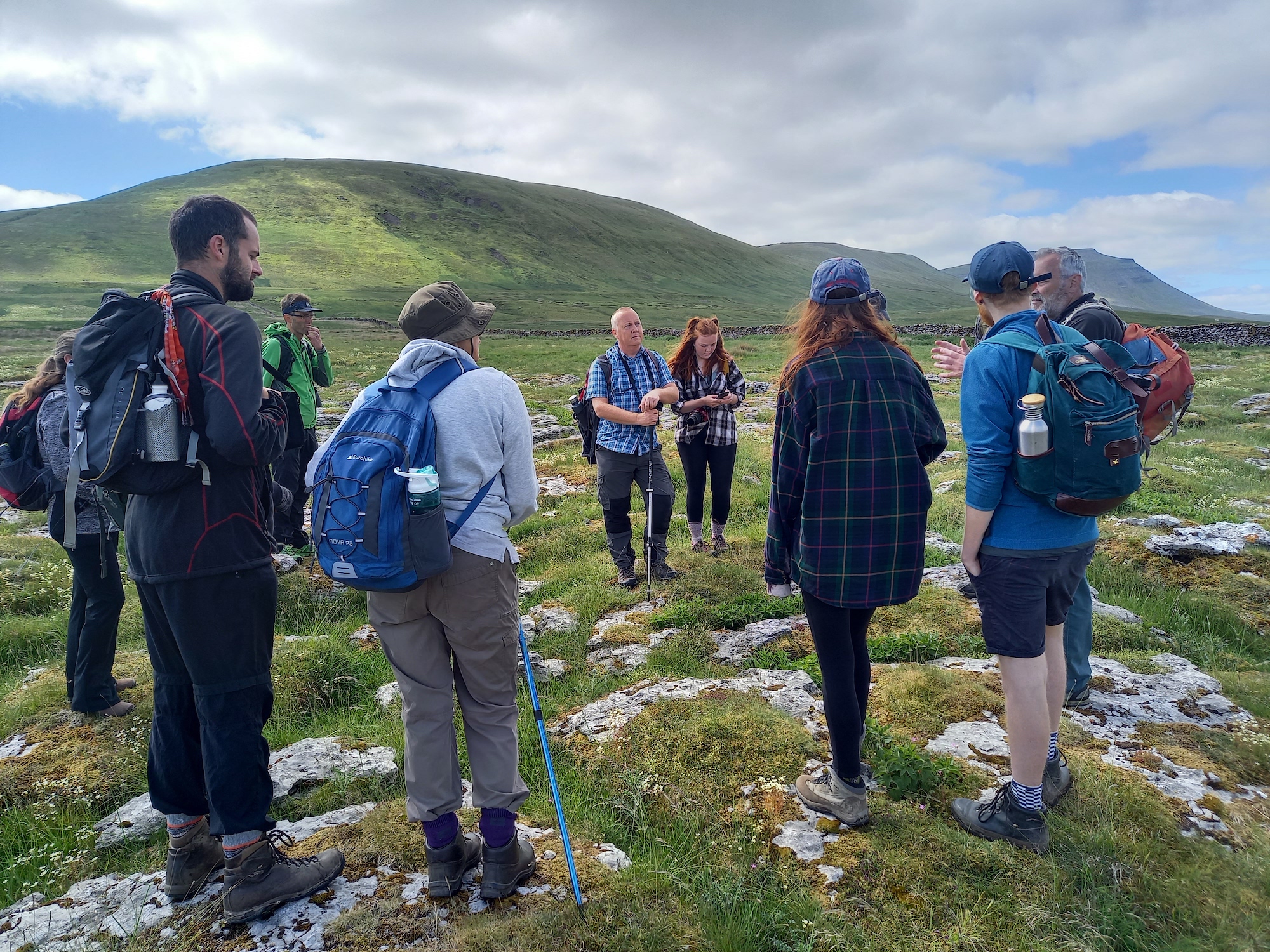
At the Yorkshire Rewilding Network, we’re really excited to watch this innovative and connected project develop. We were delighted that a group of volunteers from YRN were able to visit the project recently, in our first organised site visit.
“It was fascinating” said YRN volunteer Kate Graham “ you could see clearly the impact of grazing, and how the land recovered as the intensity of sheep grazing was reduced, or removed. They showed us the fields where the grazing had been reduced and you could see how different these fields and pavements were from the ones above where there is still a high density of sheep.
“The project includes a reserve (Scar Close) that has been off limits to grazing animals for 25 years, due to the deep clefts (grikes) in the limestone pavement. This was just wonderful to walk through. The diversity of flowers and plants (to my very untrained eye) was amazing, but even more it had a real emotional impact on me. My heart felt at ease, joyful, and I had a real sense that this is what nature recovery feels like, and how important it is for our souls, for us as human beings.
And, it had a very similar sense to the limestone pavements I used to walk across as a child. And of course it is in my life time that so much of this destruction has occurred as farmers have been pushed into intensifying beyond the lands capacity…”
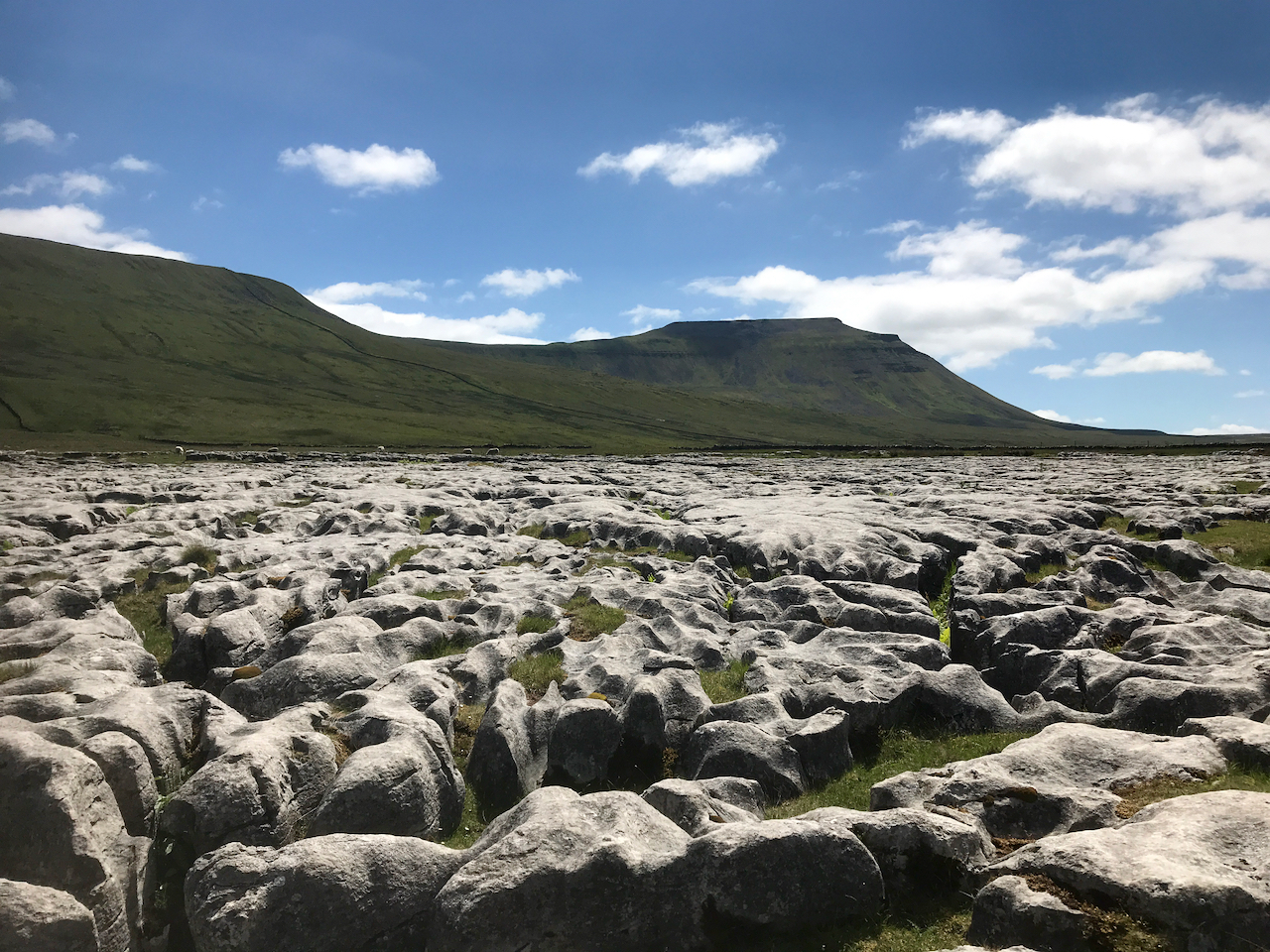
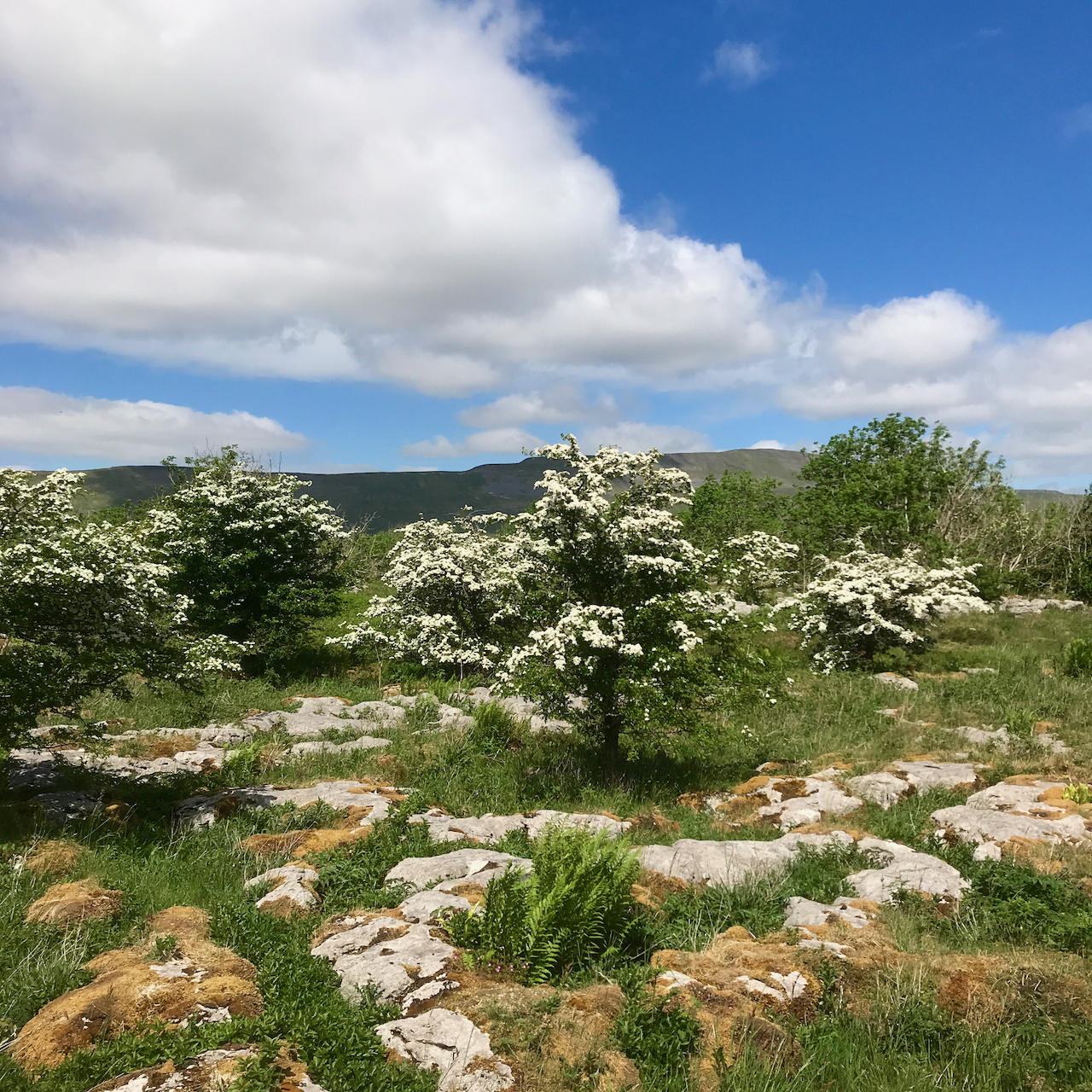
In his YRN blog “Spiral Down” John Hartshorn describes the loss of memories in each generation, in terms of what we consider to be normal in terms of the abundance and richness of nature and species. This project is finding ways to reboot these memories, to reverse the degradation, and allow nature to recover in ways that we can only hope for.
You can visit the area yourself: footpaths cross the area, and there is easy access to the nature reserve from Ribblehead station. Despite the crowds walking the three peaks, you are unlikely to see many other walkers. You need a permit from Natural England to visit Scar Close reserve: these are free and can be collected from Colt Barn (https://www.yorkshiredales.org.uk/places/scar_close/)
Stay tuned as we follow its progress! There will be plenty of opportunities for volunteering, for surveys at the start and tree planting over the winter: contact wild.ingleborough@ywt.org.uk
You can also read more about Wild Ingleborough in Rewilding Britain’s project overview: https://www.rewildingbritain.org.uk/rewilding-projects/ingleborough-national-nature-reserve
With many thanks to Andrew Hinde (Natural England), Liz Coates (Yorkshire Wildlife Trust), and Prof. Dom Spracklen (University of Leeds) for hosting our visit.
